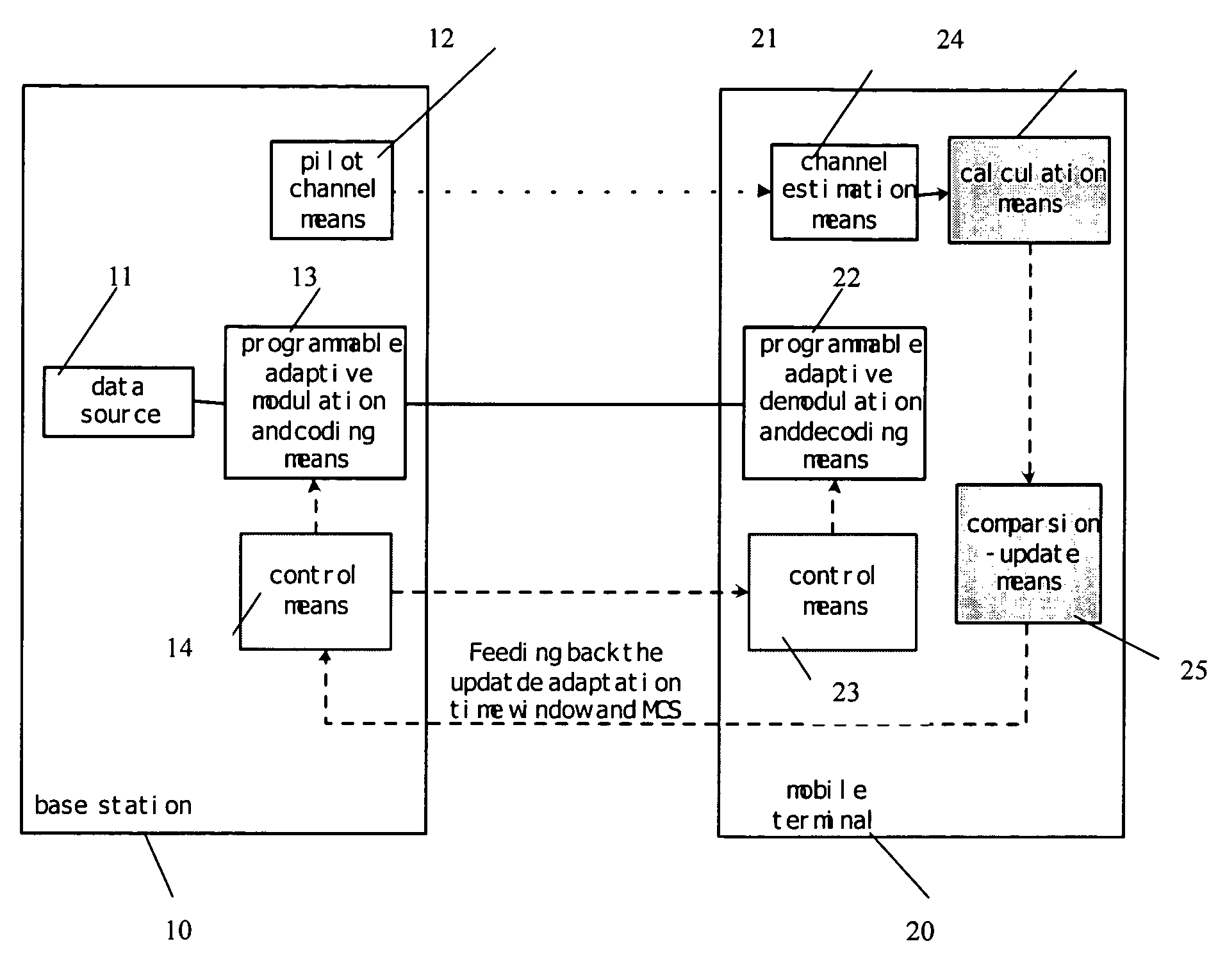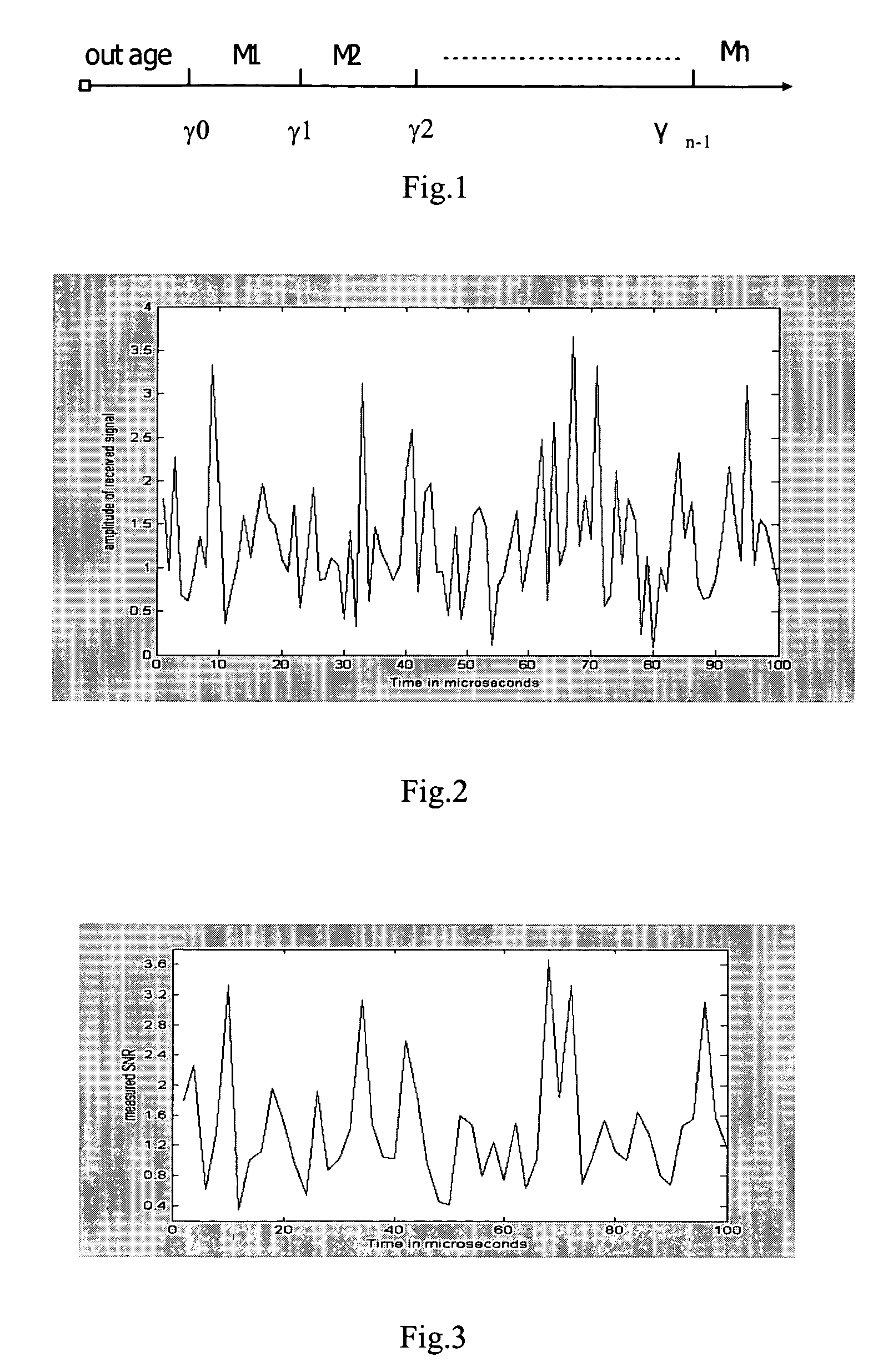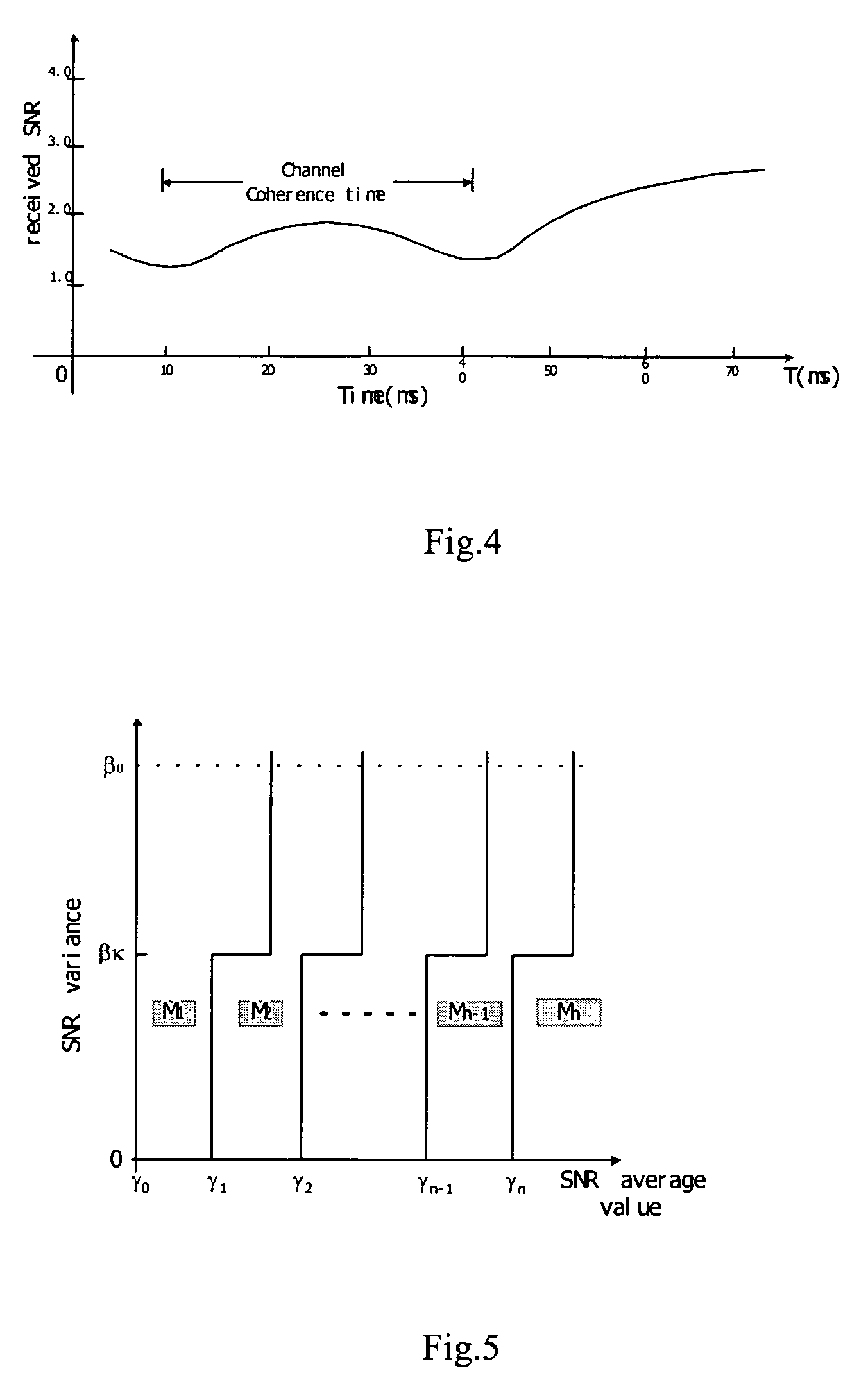Method and device for adaptive modulation and coding based on second order statistics of channel information
a second-order, channel information technology, applied in the field of wireless ofdm system adaptive modulation and coding based on second-order channel information statistics, can solve the problems of inability to track, large period t, and invalid current cqi for the next transmission with practical feedback delay, so as to reduce the probability of system outage, enhance the availability of amc, and accurate mapping
- Summary
- Abstract
- Description
- Claims
- Application Information
AI Technical Summary
Benefits of technology
Problems solved by technology
Method used
Image
Examples
Embodiment Construction
[0044]The preferred embodiments of the present invention will be described in detail in accordance with the accompanying drawings.
[0045]FIG. 5 is a diagram showing a SNR second order decision criterion of the adaptive modulation and coding method in accordance with the present invention. The decision criterion determines the modulation and coding scheme (MCS) to be adopted in accordance with the average value γ of SNR and the variance β of SNR. For instance, when γ is between γ1 and γ2, then a corresponding modulation and coding scheme M2 is adopted; When 02 is adopted, whereas when βk1 which is one level lower than the corresponding modulation and coding scheme M2 is adopted.
[0046]FIG. 6 is a diagram showing the provision of a base station and mobile station carrying out the method for adaptive modulation and coding in OFDM systems in accordance with the present invention, wherein a base station 10 includes a data source 11, a pilot channel means 12, a programmable adaptive modulat...
PUM
 Login to View More
Login to View More Abstract
Description
Claims
Application Information
 Login to View More
Login to View More - R&D
- Intellectual Property
- Life Sciences
- Materials
- Tech Scout
- Unparalleled Data Quality
- Higher Quality Content
- 60% Fewer Hallucinations
Browse by: Latest US Patents, China's latest patents, Technical Efficacy Thesaurus, Application Domain, Technology Topic, Popular Technical Reports.
© 2025 PatSnap. All rights reserved.Legal|Privacy policy|Modern Slavery Act Transparency Statement|Sitemap|About US| Contact US: help@patsnap.com



